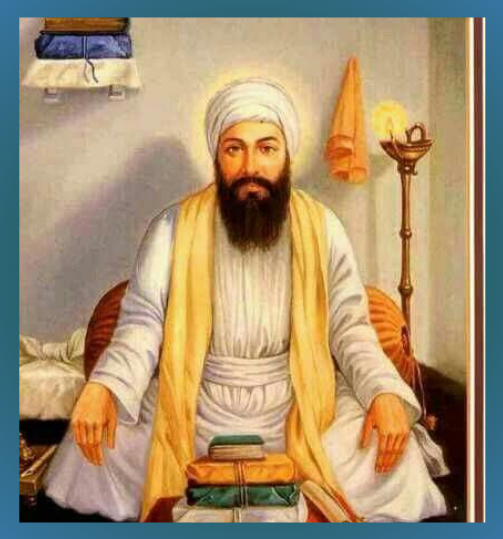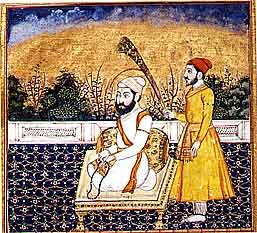Guru Angad Dev Ji

Guru Angad Dev Ji (1504–1552)
Second Guru of Sikhism
Guru Angad (born Lehna on 31 March 1504) was the second of the ten Sikh Gurus. A devout disciple of Guru Nanak, he was chosen as Nanak’s spiritual successor due to his deep humility, loyalty, and selfless service. Guru Nanak renamed him Angad, meaning “part of my body,” and formally appointed him as the next Guru on 7 September 1539.
Early Life
Lehna was born into a Khatri Hindu family in Matte-di-Sarai (now Sarainaga, Punjab). His father, Pheru Mal, was a trader, and his mother is variously known as Mata Ramo, Sabhirai, or Daya Kaur. At age 16, he married Khivi, and they had two sons (Datu and Dasu) and one or two daughters (Amro and possibly Anokhi).
Before meeting Guru Nanak, Lehna was a Durga-worshipping priest and went on frequent pilgrimages. On one such journey around 1532, he encountered Guru Nanak at Kartarpur. Moved by Nanak’s teachings, Lehna renounced his former beliefs and became a dedicated follower, serving Guru Nanak for over six years.
Becoming Guru
Many stories explain why Nanak chose Lehna over his own sons. In one famous story, when asked to retrieve a muddy jug, Lehna obeyed without hesitation, showing humility and devotion.
Guru Nanak officially appointed him as his successor in 1539. After Nanak’s passing, Angad temporarily withdrew in deep grief but returned to leadership at the request of Baba Buddha. He then moved the spiritual centre from Kartarpur to Khadur Sahib.
Key Contributions
1. Gurmukhi Script
Guru Angad is credited with standardizing and formalizing the Gurmukhi script, which became the writing system for the Punjabi language and the medium for Sikh scriptures. Though the script existed in earlier forms, he refined it for consistency and education. He also contributed 62–63 Saloks (verses) to the Guru Granth Sahib.
2. Langar (Community Kitchen)
He strengthened the practice of langar, the free communal kitchen system started by Guru Nanak. Guru Angad set guidelines for seva (volunteer service), emphasizing cleanliness, humility, and equality regardless of caste or religion.
3. Mall Akhara (Wrestling & Fitness)
A supporter of physical well-being, Guru Angad promoted wrestling and physical fitness through Mall Akharas (wrestling arenas). These also served to teach discipline, health, and abstinence from intoxicants.
4. Biographical and Literary Work
He is believed to have commissioned a biography of Guru Nanak (possibly the Bhai Bala Janamsakhi tradition) and began compiling Nanak’s hymns, preparing the foundation for what would become the Guru Granth Sahib.
Relationship with the Mughal Empire
In 1540, after losing his throne to Sher Shah Suri, Mughal Emperor Humayun visited Guru Angad at Khadur Sahib. According to tradition, when Humayun angrily drew his sword after not being greeted, the Guru calmly reminded him of his failure in battle and counselled him to channel his energy righteously. Guru Angad is said to have blessed Humayun, foretelling his return to power.
Succession and Death
Guru Angad followed Nanak’s tradition of merit-based succession. Instead of choosing his sons, he selected Guru Amar Das, a devoted older disciple, as the third Sikh Guru. Amar Das had come into the fold after hearing hymns sung by Guru Angad’s daughter Amro and served with complete devotion.
Guru Angad passed away on 29 March 1552 at Khadur Sahib.
Legacy
Guru Angad carried forward the message of Guru Nanak with dedication. His codification of Gurmukhi, strengthening of Sikh community structures, and insistence on seva, physical health, and scriptural preservation helped solidify the Sikh identity. He played a vital role in transforming a spiritual movement into an organized community.

